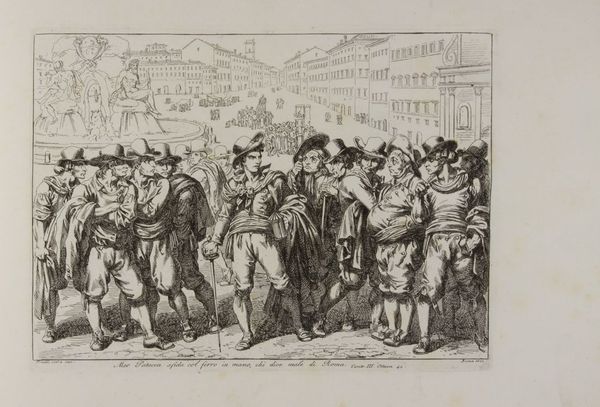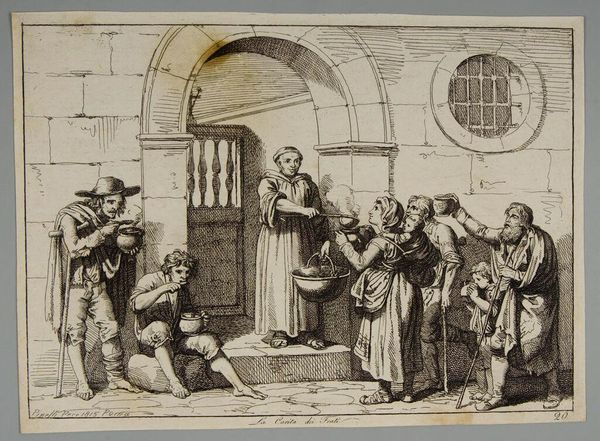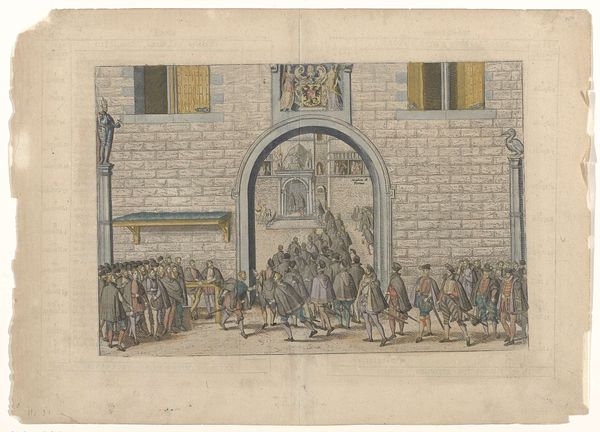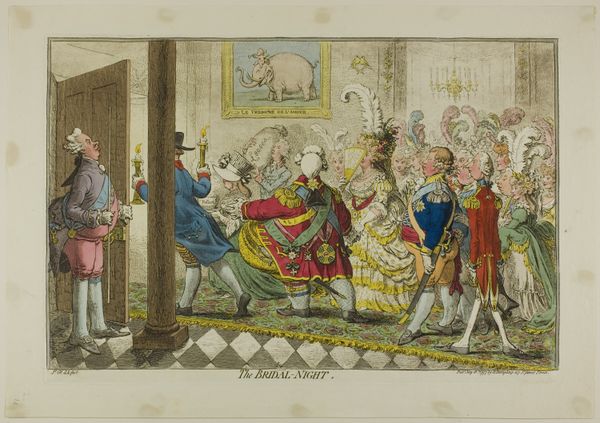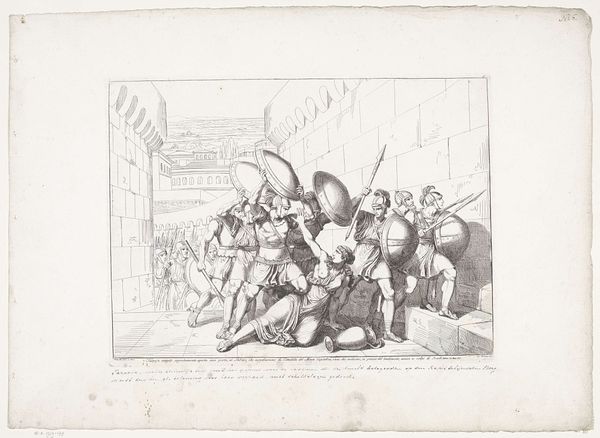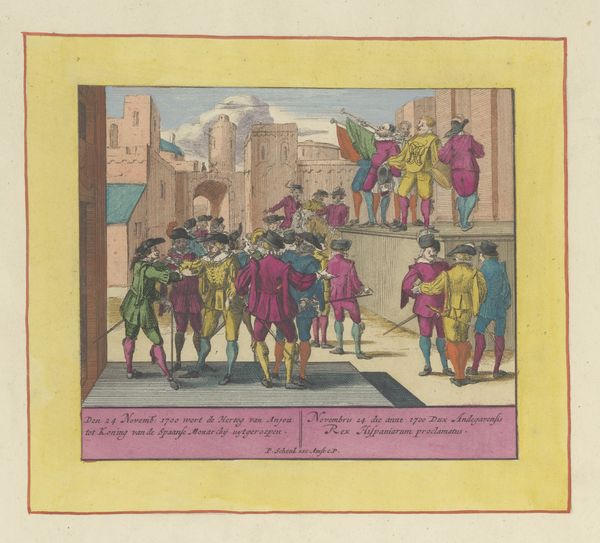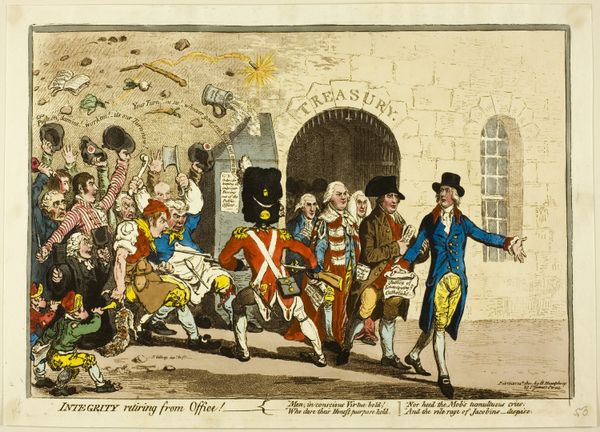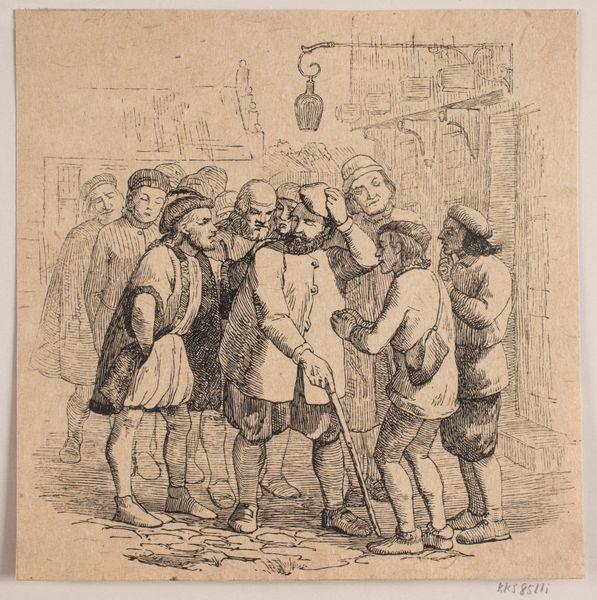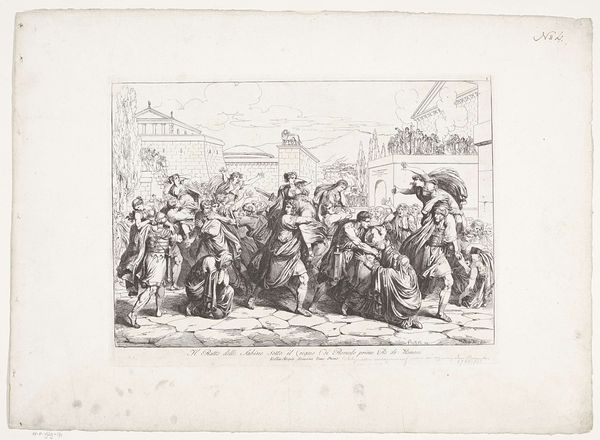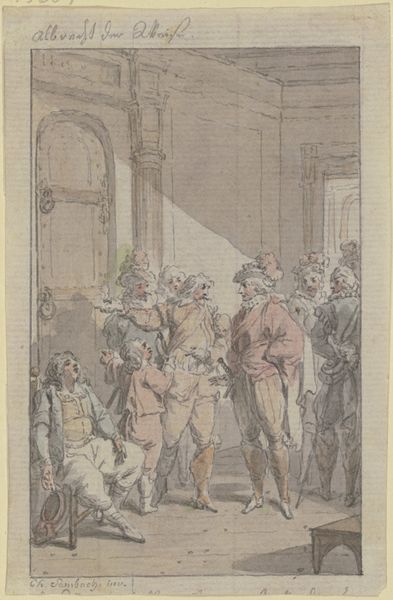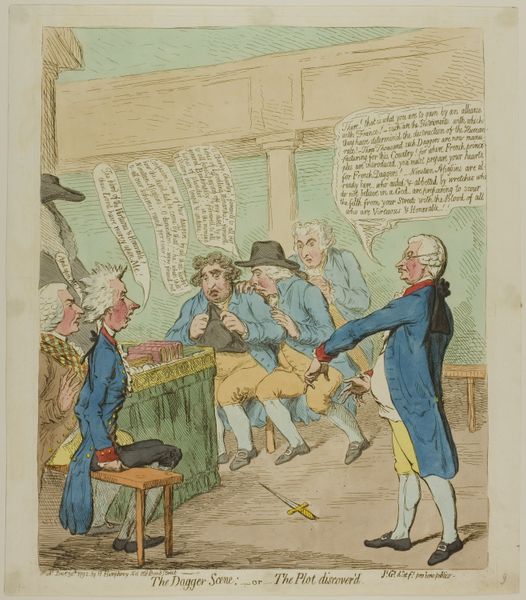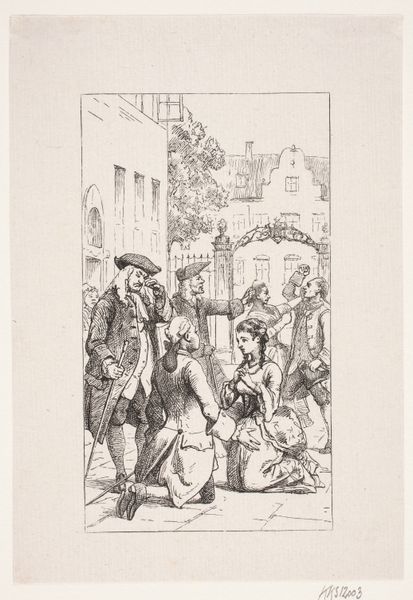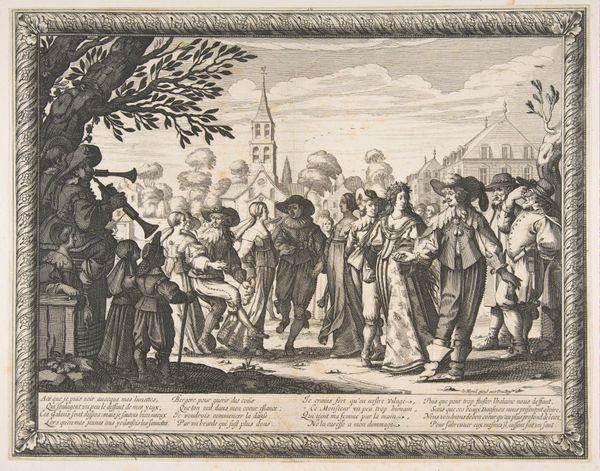
drawing, print, engraving
#
drawing
#
water colours
#
narrative-art
# print
#
figuration
#
romanticism
#
genre-painting
#
history-painting
#
academic-art
#
engraving
Dimensions: 34 x 44 cm
Copyright: Public domain
Editor: Here we have Bartolomeo Pinelli's "Distribution of Bread to the Farmers, Inside the Flavian Amphitheater," a print from 1831. There's a lot happening—a crowd, soldiers, the imposing Colosseum in the background. It feels like a carefully staged scene, almost like propaganda. What's your take on it? Curator: Indeed, the apparent chaos is carefully constructed. Consider the date, 1831. What does it tell us about the context surrounding Pinelli's depiction of charity within a space laden with imperial history, the Colosseum? The distribution of bread here suggests not simply philanthropy but perhaps a deliberate staging of power, a visual assertion of control over the populace within a space historically associated with dominance and spectacle. Editor: So it’s not just a nice scene of giving bread; it’s a statement? How did art function as propaganda back then? Curator: Art has long played a crucial role in shaping public opinion and reinforcing social hierarchies. Think about who commissions such a piece, and to what ends. Images like these would be circulated as prints, reaching a relatively broad audience. The scene is picturesque – but that idealized image might serve to mask underlying social tensions or political agendas. Do you notice any elements in the composition or figures that further suggest a controlled, ordered distribution, rather than genuine chaos or need? Editor: The soldiers seem to be controlling the crowd, making sure everything is orderly. Is that why you say the act of 'giving' in that space can be seen as asserting power? Curator: Precisely. The act is framed within a system of governance. It subtly promotes a specific sociopolitical structure. So this print shows both an actual event *and* a careful construction of public image, all while recalling Imperial history in the space itself. Editor: That's a much richer reading than I initially had! I was only looking at it on the surface. It is like we are prompted to see only the intended view, the staged harmony between the state, the needy and this glorious historical place.
Comments
No comments
Be the first to comment and join the conversation on the ultimate creative platform.
